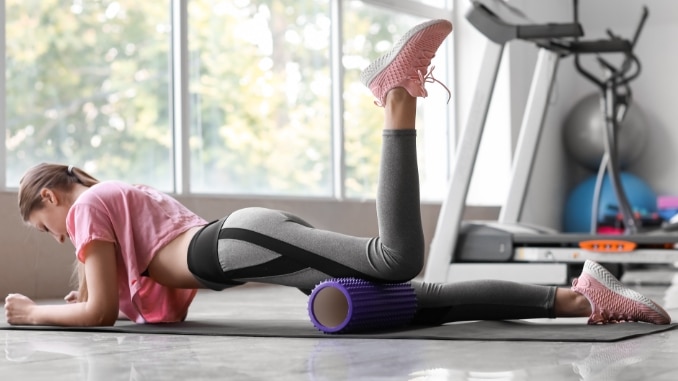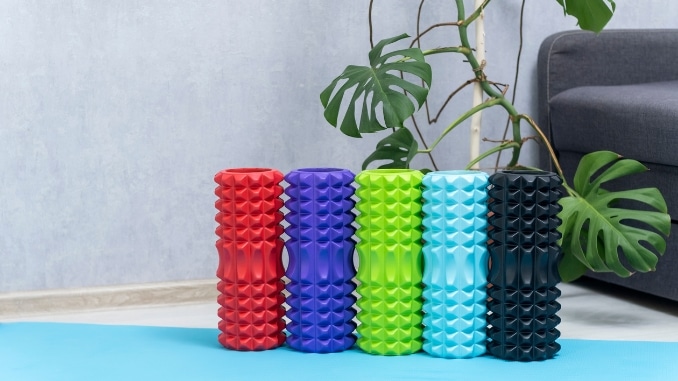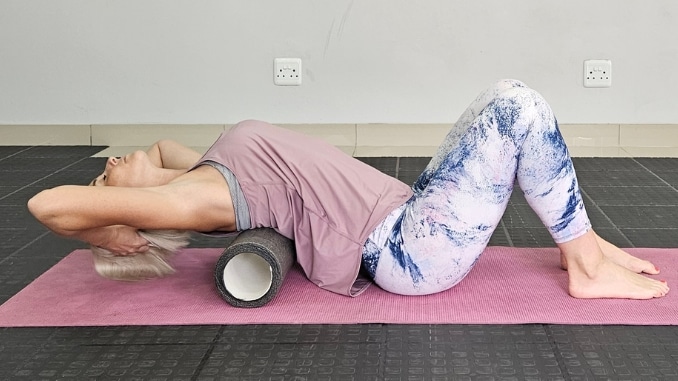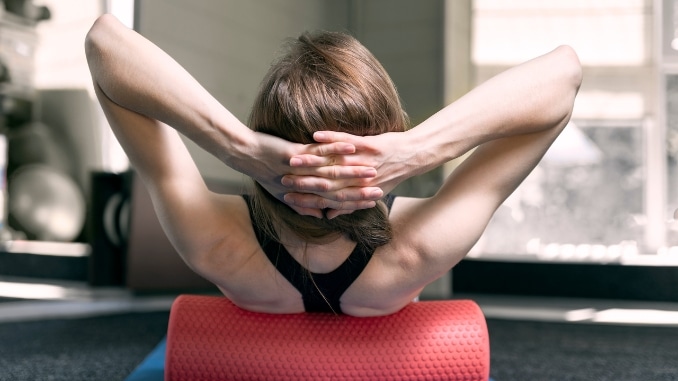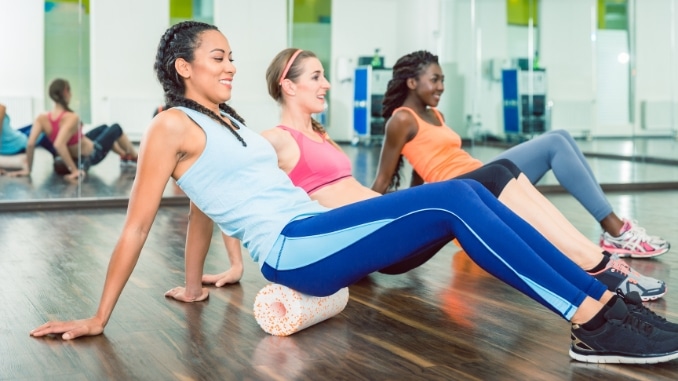
Are you tired of dealing with muscle tension and soreness after a workout? If so, it’s time to introduce yourself to foam roller exercises, the secret weapon for a stronger, healthier body. Foam rolling exercises offer an effective and affordable way to enhance your workout routine and improve muscle recovery.
You can target specific muscle groups with a foam roller and your body weight, releasing muscle tension, soft tissue adhesions and increasing flexibility. Foam roller exercises benefit professional athletes and fitness enthusiasts by aiding muscle recovery, preventing injuries, and improving overall performance.
In this article, we will explore the various foam roller exercises, techniques, and tips that will help you say goodbye to muscle tension and hello to a more substantial, healthier body. If you include these exercises in your everyday schedule, you can enjoy faster muscle recovery, improved flexibility leads to a broader range of motion, and reduces the risk of injuries. Therefore, prepare to alleviate muscle tension and unleash your body’s potential through foam roller exercises.
What is a Foam Roller Exercise?
Muscle tension is a common issue many experience after engaging in physical activities or prolonged periods of inactivity. It can lead to discomfort, pain, and limited range of motion. Understanding the causes and effects of muscle tension is crucial in finding effective ways to alleviate it and prevent further complications.
Various factors, including intense exercise, poor posture, stress, and muscle imbalances, can cause muscle tension. When muscles are overworked or strained, they become tight and can develop knots or trigger points. These knots restrict blood flow and limit the muscle’s ability to function properly, leading to discomfort and reduced flexibility.
The effects of muscle tension on the body can be far-reaching. Not only does it cause immediate discomfort and pain, but it can lead to chronic conditions such as muscle imbalances, joint pain, and reduced athletic performance. Muscle tension can also affect the posture and alignment of the body, leading to further issues down the line.
One effective way to combat muscle tension is through foam roller exercises. Foam rolling aids in targeting particular muscle groups and exerting pressure, thereby assisting in releasing tension, increasing blood flow, and improving muscle flexibility. It can be used as a standalone practice or incorporated into any fitness routine, making it a simple yet powerful technique.
What is Foam Roller Exercise Good For?
Foam roller exercises offer many benefits that can enhance your overall fitness journey. From improved muscle recovery to increased flexibility, incorporating foam roller exercises into your routine can take your workouts to the next level. Let’s explore some of the key benefits of foam roller exercises.
1. Muscle Recovery and Reduced Soreness
One of the primary benefits of foam roller exercises is their ability to enhance muscle recovery post-workout. Foam rolling applies pressure to muscle groups, breaking up knots and promoting blood flow and oxygen delivery. This aids in flushing out metabolic waste and reducing muscle soreness, allowing quicker recovery and improved performance in subsequent workouts.
2. Increased Flexibility and Range of Motion
Flexibility plays a crucial role in overall fitness and athletic performance. Foam roller exercises can help improve flexibility by releasing muscle tension and increasing joint mobility. As you roll over specific muscle groups, the pressure helps stretch and lengthen the muscles, allowing for a greater range of motion. Improving your flexibility enhances athletic performance and lowers the chances of injury during physical activity.
3. Injury Prevention and Improved Performance
Foam roller exercises are not only beneficial for muscle recovery and flexibility but also for injury prevention. Regularly incorporating foam rolling into your routine can help identify and address muscle imbalances that often cause injuries. The targeted pressure applied during foam rolling helps correct muscle imbalances, improving overall body alignment and lowering the risk of strains, sprains, and other common injuries. Additionally, foam roller exercises can improve your overall performance in various physical activities by enhancing muscle recovery and flexibility.
4. Affordable and Convenient
Another advantage of foam roller exercises is their affordability and convenience. Foam rollers are a cost-effective and portable fitness equipment that can be used at home or on the go. Incorporating foam roller exercises into your routine requires minimal space and equipment, making it an accessible option for individuals of all fitness levels.
With these benefits in mind, it’s clear that foam roller exercises can be a valuable addition to any fitness routine. Foam roller exercises can benefit beginners and experienced athletes by improving flexibility, enhancing performance, and promoting overall body health.
How to Choose the Right Foam Roller?
Now that you understand the benefits of foam roller exercises, choosing the right foam roller to suit your needs is essential. With various types and densities in the market, selecting the appropriate foam roller can significantly impact your overall experience and results. Here are some factors to consider when choosing a foam roller.
1. Density and Firmness
Foam rollers come in different densities and firmness levels, ranging from soft to extra firm. The density of the foam roller regulates how deep the pressure will be and how effective it will be in releasing muscle tension. Softer foam rollers are more gentle and suitable for newbies or individuals with sensitive or tight muscles. In comparison, firmer foam rollers provide a deeper massage and are ideal for individuals who require more pressure to release tension.
2. Size and Shape
Foam rollers are available in various sizes and shapes, each designed for specific purposes. The standard size is 6 inches in diameter and 36 inches in length, which is suitable for most individuals. However, if you require more targeted pressure or want to focus on smaller muscle groups, you can opt for a smaller foam roller or one with ridges or knobs for added intensity. The shape of the foam roller, such as a half-round or textured surface, can also provide different benefits and variations in your exercises.
3. Material and Durability
Foam rollers are typically made of either EVA foam roll or molded polypropylene. EVA foam rollers are softer and provide a gentler massage, while molded polypropylene foam rollers are firmer and offer a deeper penetration. Both materials are durable and can withstand regular use, but the choice ultimately depends on your personal preference and the level of intensity you desire in your foam roller exercises.
When selecting a foam roller, it’s essential to consider your specific needs and preferences. If possible, try out different foam rollers to determine which density, size, and shape work best for your body. Opting for a high-quality foam roller that suits your requirements will ensure a more effective and enjoyable foam rolling experience.
Foam Roller Exercises for the Lower Body
The lower body is often subjected to intense physical activity, making it prone to muscle tension and tightness. Foam roller exercises for the lower body can target specific muscle groups, release tension, and improve flexibility. Whether you’re a runner, cyclist, or simply looking to alleviate muscle soreness, Incorporating these exercises into your workout routine can strengthen and increase the resilience of your lower body. Let’s explore some foam roller exercises specifically targeting muscle tissue in the lower body.
1. Calf Roll
For this exercise, utilize the foam roller or an exercise ball.
Begin in an upright sitting position on the floor with your knees bent and your feet flat on the floor, maintaining good alignment in your upper body. Place the foam roller under your calf area. Extend both legs out in front and place both hands behind you for support. Engage your core. Push from your hands to slightly lift your seat from the ground
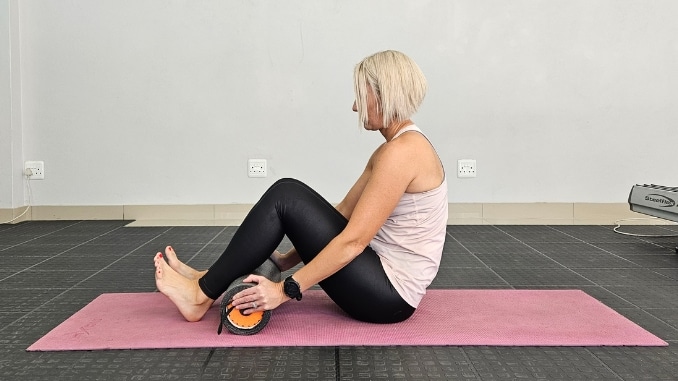 |
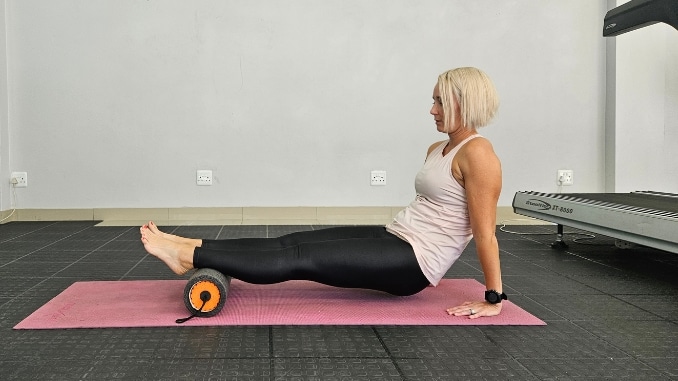 |
 |
Note: To intensify the movement, slightly lean your body forward or slowly roll your calves from side to side.
2. Hamstring Roll
Begin in an upright sitting position on the floor with your legs bent and your feet flat on the floor, maintaining good alignment in your upper body. Place both hands behind you for support. Extend both legs out front and place the foam roller under your hamstrings. Straighten both arms to lift your seat off the floor, then roll the foam roller from just above your knees to the bottom of your seat and body and back. Repeat the movement.
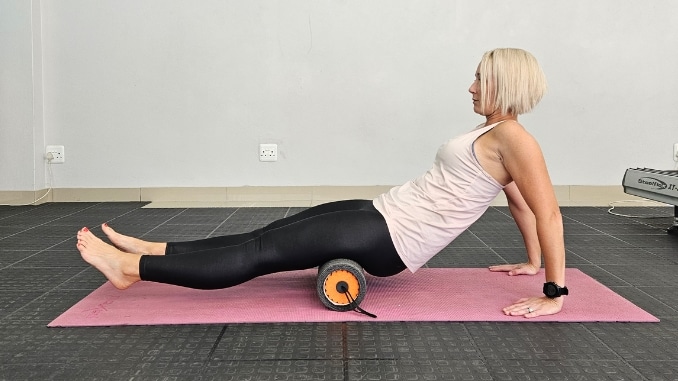 |
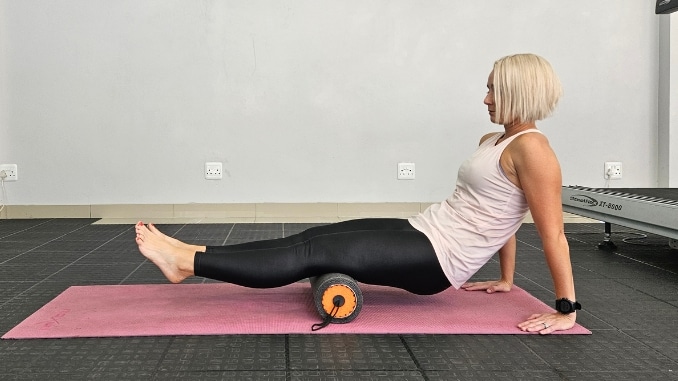 |
Note: Target the outer lateral hamstring by rolling with one leg and turning the foot outward. To focus on the outer thigh, pivot the foot inward while rolling with a foam roller, tennis ball, or flex bar to apply pressure to the inner hamstring. Repeat on the other leg.
3. Hamstring Stretch
For this foam rolling exercises, use a strap, resistance band, towel, or anything that is long enough to wrap under your foot.
Lie on your back on the floor with your knees bent and feet flat on the floor, relaxing your upper body. Engage your core. Lift your left leg and use your hands to grab the back of your hamstring, pulling your left knee closer with your toes pointing toward you. Hold this position for a couple of seconds. Relax and return to the starting position. Repeat the movement on your right leg.
 |
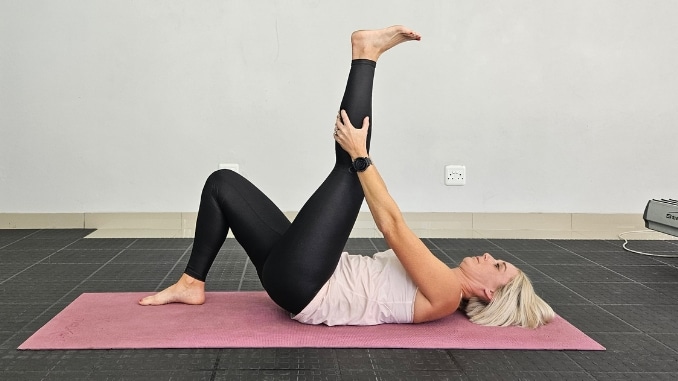 |
4. Chest Opener
Lie on your back on the floor with your knees bent and your feet flat on the floor. Place the foam roller horizontally under your mid back. Position your hands by your ears or interlace your fingers behind your head for support. Engage your core, lower your head to the floor, and arch your spine over the foam roller, opening your chest up. Hold this position for a few seconds. Relax and return to the starting position. Repeat the movement as needed.
To make this foam rolling exercises easier, place a pillow or rolled blanket underneath to support your head.
Note: To intensify the movement, place the foam roller higher, lift your hips, and then roll back and forth or rotate from side to side.
Adding Foam Roller Exercises Into Your Fitness Routine
Now that you’ve learned about the various foam roller exercises targeting the upper and lower body, it’s time to incorporate them into your fitness routine. Whether a beginner or an experienced athlete, adding foam roller exercises to your warm-up, cool-down, or recovery sessions can provide numerous benefits.
Here are some tips on effectively incorporating foam rolling exercises into your fitness routine:
1. Warm-up
Foam roller exercises can be a great addition to your warm-up routine, as they help improve blood circulation and warm up the muscles for higher activity. Before engaging in dynamic stretches or cardio exercises, spend 5-10 minutes foam rolling the major muscle groups. Focus on tight or restricted areas, applying gentle pressure and gradually increasing the range of motion.
2. Cool-Down
Foam roller exercises are also beneficial during the cool-down phase of your workout. After completing your main exercises or cardio session, spend 5-10 minutes foam rolling the muscles you worked. This will help release tension, flush out metabolic waste, and promote muscle recovery. Focus on areas that feel sore or tight, applying gentle pressure and taking deep breaths to allow the muscles to relax.
3. Recovery Sessions
Integrate foam roller exercises into warm-ups and cool-downs and optimize their benefits with dedicated recovery sessions, especially on rest or lighter training days. Allocate 15-20 minutes to systematically foam roll major muscle groups, gently applying pressure to tight areas while focusing on deep breaths. This approach significantly improves muscle recovery, reduces soreness, and prevents potential imbalances.
Maximize the advantages of your fitness regimen by integrating diverse foam rolling exercises, techniques, and durations to cultivate a stronger, more resilient body. Consistency is paramount in warm-ups, cool-downs, or dedicated recovery sessions. Aim for 2-3 sessions per week to harness the benefits fully, discovering the optimal combination that suits your body and contributes to its overall well-being.
Common Mistakes to Avoid When Using a Foam Roller
Roll correctly when using the foam roller to avoid potential pitfalls and gain maximum exercise benefits. Here are some common mistakes to avoid when using a foam roller:
1. Rolling Too Fast
Properly using the foam roller is essential to avoid pitfalls and gain maximum exercise benefits. When using a foam roller, be mindful to roll correctly, whether with the foam roller perpendicular to the muscle or positioned horizontally, to ensure effective and safe muscle release.
2. Applying Too Much Pressure
On the flip side, applying too much pressure can also be counterproductive. Using excessive force can cause discomfort and potentially lead to bruising or injury. Start with moderate pressure and gradually increase it if needed, but always listen to your body and adjust accordingly.
3. Neglecting Proper Form
Maintaining proper form is crucial when performing foam roller exercises. Ensure that your upper body part is properly aligned and supported to avoid putting unnecessary strain on your joints or muscles. If unsure about the correct form, consider working with a qualified fitness professional or watching instructional videos.
4. Ignoring Pain or Discomfort
While foam rolling may feel slightly uncomfortable, it should not be painful. Stop immediately and reassess your technique if you experience sharp or intense pain during a foam roller exercise. Pain could indicate an underlying issue that requires professional attention.
Avoiding these common mistakes is essential to safely and effectively incorporate foam roller exercises into your fitness routine. This will help you maximize their benefits and minimize the risk of injury.
Conclusion:
Foam roller exercises offer a simple yet effective way to say goodbye to muscle tension and hello to a stronger, healthier body. Adding these exercises to your fitness routine can boost muscle recovery, prevent injuries, and improve performance. Ensure to begin slowly and progressively increase both intensity and duration. Listen to your body and adjust the pressure and technique accordingly. With consistency and proper form, foam roller exercises can become essential to your fitness journey, unlocking your body’s full potential.
So, what are you waiting for? Grab a foam roller and start rolling away the muscle tension today. Your body will thank you for it. Check out this Foam Rolling 101 now!

